Design Thinking Books You Must Read (updated)
Can you think that following a design thinking process with five steps turns you into a creative innovator?! Believe me, it isn’t and never has been this way. The spread of the term design thinking is aligned with a significant amount of misleading criticism. The doubts about the effectiveness of design thinking are influenced by the promotional language used by some companies, training places, and public speakers. The truth is that there is no secret recipe to turn someone into a creative designer. Yet, there is a way to use the design expertise inside each of us. Understanding the design thinking core values can help team members improve their design ability and appreciate the creative practice inside the organization to achieve the next competitive advantage. This is why I wanted to share with you those key design thinking books to learn the core principles underpinning the design practice.
This is an updated list of design thinking books that I keep adding to their new book suggestions. So, please keep the link or subscribe to the newsletters to receive updates once new books are added. I am also starting to add papers that represent the cornerstone in the design thinking principles that I believe are as important as the book. In this update, two books and one paper added: The Science of Artificial, Wicked Problems in Design Thinking, and How Designers Think.
Previously, we explored different challenges that can be faced when applying design thinking inside the organization ( Why Companies Need to Apply Design Thinking and Why Companies Need to Apply Design Thinking). The majority of these factors rely on the lack of understanding of the core value of design thinking, which can be a reason for over-promotion and misuse of a commercialized language (check Why Design Thinking Doesn’t Work). Above all, many design thinking trainers are not designers themselves and never practice the creative practice before teaching it which causes the gap between classrooms and practices.
Design Thinking Books
To expand my knowledge of the core values behind design thinking, I thought I would share with you some of the book titles that highlight design characteristics. Each of these books explores design from a specific perspective. Learning about these design aspects is essential for both designers and non-designers before jumping to learn design thinking. While there are several books about design thinking toolkits, the books below don’t teach you to design thinking methodology but the core principles behind design thinking to develop new alternatives of ideas and improve the analytical thinking of problems and solutions. They aim to guide you in understanding the core values and practices of design as a collaborative process. By acquiring this knowledge, you can effectively apply any of the design thinking processes we discussed earlier in previous articles with effectiveness. I am sure that those are not the only books out there, so please share with us your book suggestions in the comments below the article.
Related article:
The Double Diamond Design Thinking Process and How to Use it
What is Design? And What is not?
Design Thinking Guide: What, Why and How
Why Design Thinking Doesn’t Work
Measuring the Impact of Design Thinking
Design Expertise by Kees Dorst
The Design Expertise, written by Lawson and Dorst, focuses on the understanding of design practice in the creative industry. The book aims to explore the nature of design from a practitioner’s perspective. It starts by exploring the different definitions of design and how they contributed to identifying the border of the discipline of design.
The book presents design work for different designers and tries to use this overview of their work to provide a practical example of design characteristics. This book provides you with a base idea about design, what it is, and its characteristics. Exploring the characteristics through design thinking case studies, and examples helps you see design’s core value. This value is the main cornerstone behind the application of the design thinking process.
Frame Innovation by Kees Dorst
One of the main design characteristics is to solve problems or move from one position to an improved one. However, this can’t be achieved without a clear idea of the problem and its different borders. In his book Frame Innovation, Dorst explores the cognitive design process’s problem and solution frames. Also, he explores how designers move from one frame to another and how this feedback process contributes toward an optimum solution for wicked problems.
Many of the design thinking process models move from the exploration stage (divergent) to defining the solution (conversion). While this practice shares the principle of critical thinking, they all move between the problem frame and solution frame. Through this book, you will explore the principles and practices of problem/solution frames to develop creative potential ideas.
The book extends discussion of of the principle of frame innovation by covering the opportunities and challenges related to its application in creative industries. The book ends by putting a practice action plan to move toward using the frame innovation in different business models.
Design Thinking: Understanding How Designers Think and Work
In this small yet informative book, Design Thinking, Nigel Cross explores how designers think and reach creative ideas in the design field and the nature of design from the perspective of idea formation. To this goal, the book overviews design practice based on observing and interviewing creative designers and exploring expert tips with them. Design processes try to explore the design expertise from creating the idea to applying it. However, the design ability comes earlier when ideas are formulated. The book’s first chapter explores this design ability and how each of us has a level of design ability to develop new ideas. Yet, some people are more designers than others, which is known in Lusy Kimbel’s two papers as the creative class (Rethinking Design Thinking: Part 1 and Part 2).
The book overviews designers’ practice in different fields and stories. The aim of this overview through creative designers’ experience is to build an understanding of the inspiration or exploration stage in the design thinking process. For instance, what is brainstorming, and why is it applied at an early point in the design thinking process (How to Successfully Apply Inspiration in Design Thinking)? Linking similar questions to the practice helps you map your practice to rational reasoning and subsequently improves the progress of the process in the future.
Change by Design by Tim Brown
Change by Design, by Tim Bowen, CEO of the IDEO, is probably one of the commonly known books about design thinking because of the popularity of the IDEO in the application of design thinking in various social innovation contexts. In his book, Tim Brown manifests his ideology about design thinking and interprets it from the organisational perspective. The book aims to clarify what design thinking is, and where to go from theory to practice. In the first part, the books focus on the main concepts of design thinking (check Design Thinking Tools and Methods Complete Guide), such as extending behind the aesthetics, shifting toward a human-centred approach (i.e. improving customer experience and building inclusive design), the power of prototyping, and the importance of storytelling. The second part of the book aims to interpret these principles for practicality to identify the business opportunities for design thinking and the use of design to achieve innovation inside organisations through creative collaboration between stakeholders.
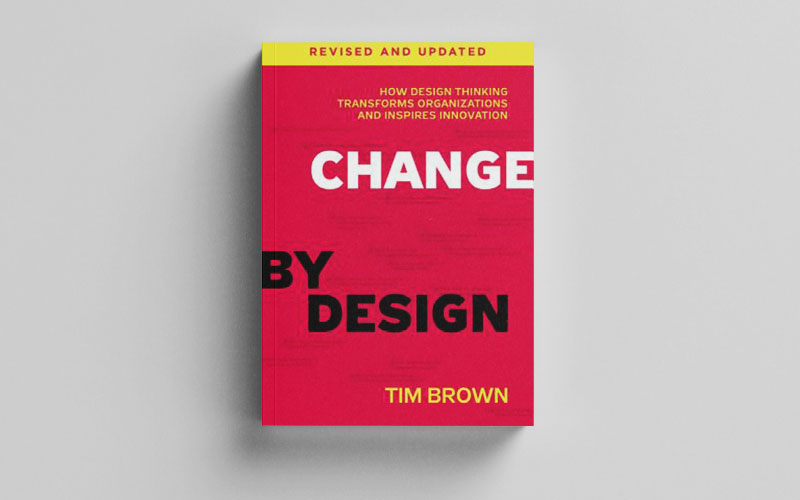
The book is a good resource for both designers and business people to understand design thinking and its applications. Despite several criticisms of the IDEO design thinking model, the book describes the theoretical base of design thinking, which could have a positive, innovative impact on organisations, especially if applied properly to develop viable business strategies. The IDEO Field Guide can be a good companion for the book as it presents a toolbox to apply Tim Brown’s ideology in practice.
The Design of Everyday Things by Don Norman
Don Norman is one of the leading professors in behaviour psychology and human-computer interaction (HCI). His book, The Design of Everyday Things, is based on a simple observation: why do we love and hate some elements in our lives? And what is the psychology behind our behaviour toward products? Addressing these two questions presents a cornerstone of your design practice. For example, why do some people love products such as Apple, Mini Cooper, or IKEA? By understanding how consumers love or hate products, the design team can target these features to build an empathic relationship between the product (or service) and the client, known as emphatic design.
The book explores human-centred design and its impact on usability interaction design principles, as well as user experience. While other books covered this aspect of design experience, Norman studied the experience from a psychological point of view to examine this complex design process. The book covers the psychology behind our daily actions, knowledge, design limitations, and human error. Later, the book explores design thinking as a tool to solve problems and the usage of the Design Council Double Diamond design thinking process. The book is not only for UX designers but for designers from different practices, as you can learn the following:
- How the brain works and the psychology related to products and services,
- The limitations related to our experience with interacting with designs around and
- Human error and a bad design causes .
How Designers Think? by Bryan Lawson
How Designers Think? by Bryan Lawson is one of the design thinking books I recommend for my students who are still new to problem-solving and understanding the philosophical approach underpinning the problem and solution space in the design thinking process, How Designer Think for Bryan Lawson overviews the design definition, the relation between problem and solutions and the design thinking process.
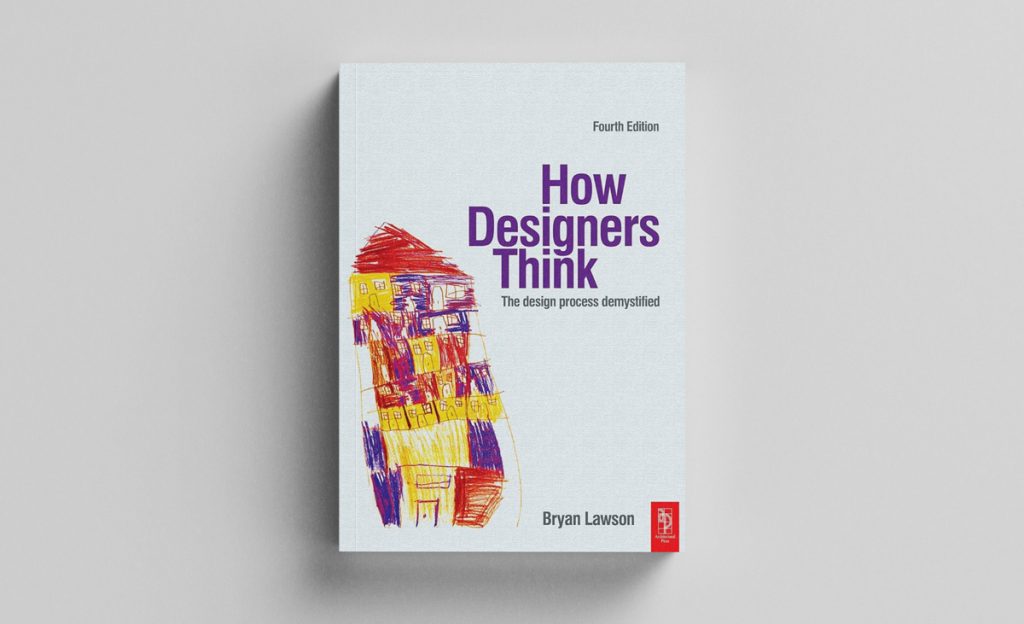
Unlike other books, Lawson doesn’t aim to teach you his method or derive a specific point; it is more like a discussion book to allow you to reflect and synthesise on the design practice and finally come up with your conclusion. The book presents a flow of ideas as a case study, making it easy to understand and enjoyable for new readers in design thinking. I recommend reading it before moving to more advanced books such as The Science of Artificial.
The Science of Artificial by Herbert Simon
The Science of Artificial is one of Simon’s most famous and irritating works based on three lectures for him at MIT in 1968, a year before the book was first published. The book discusses the nature of human thinking and the “artefact.” In eight chapters, it explores how humans use artefacts to solve everyday problems. His expression of human rationale is expressed with three premises:
- The limitations in the human’s cognitive ability
- The time available to make a decision, and
- The complexity of the problem
Based on these three premises, he concluded that we are under the illusion that we can choose the optimal solution for problems. Instead, we find a way to determine the reasonable solutions (check What Are The Six Thinking Hats? And How to Use Them?).
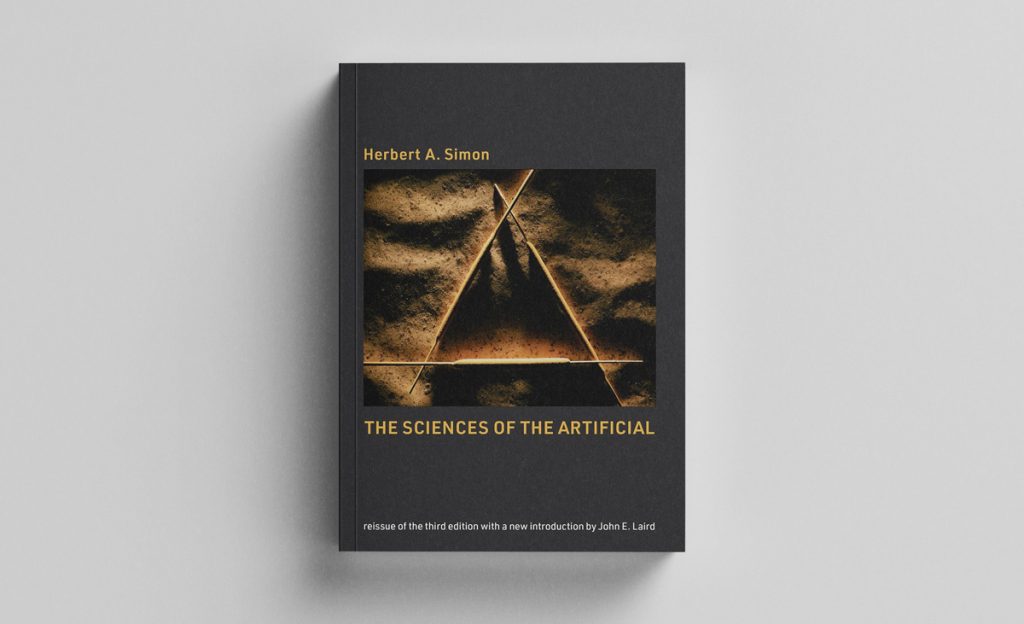
Simon was awarded a Nobel Prize for his theory and its contribution to economic rationality. According to the above theory, Simon defined three problem-solving activities: the ability to conduct a heuristic search for alternatives, evaluate solutions, and allocate resources for search. He illustrates this concept in his statement:
” Human problem solving involves nothing more than varying mixtures of trial and error and selectivity. The selectivity derives from various rules of thumb, or heuristics, suggesting which paths should be tried first and which promising leads.”
Wicked Problems in Design Thinking (Paper) by Richard Buchanan
Wicked Problems in Design Thinking by Buchanan was published in Design Studies in 1992. Buchanan linked design and analytical philosophy by understanding the design problem’s nature and elements. He discussed two terms: “category” and “placement”, where we frame the different aspects of the problem. Buchanan describes them as follows:
“Understanding the difference between a category and a placement is essential if design thinking is to be regarded as more than a series of creative accidents. Categories have fixed meanings that are accepted within the framework of a theory or a philosophy and serve as the basis for analysing what already exists. Placements have boundaries to shape and constrain meaning but are not rigidly fixed and determinate. The boundary of placement gives a context or orientation to thinking, but the application to a specific situation can generate a new perception of that situation and, hence, a new possibility to be tested. Therefore, placements are sources of new ideas and possibilities when applied to problems in concrete circumstances.”
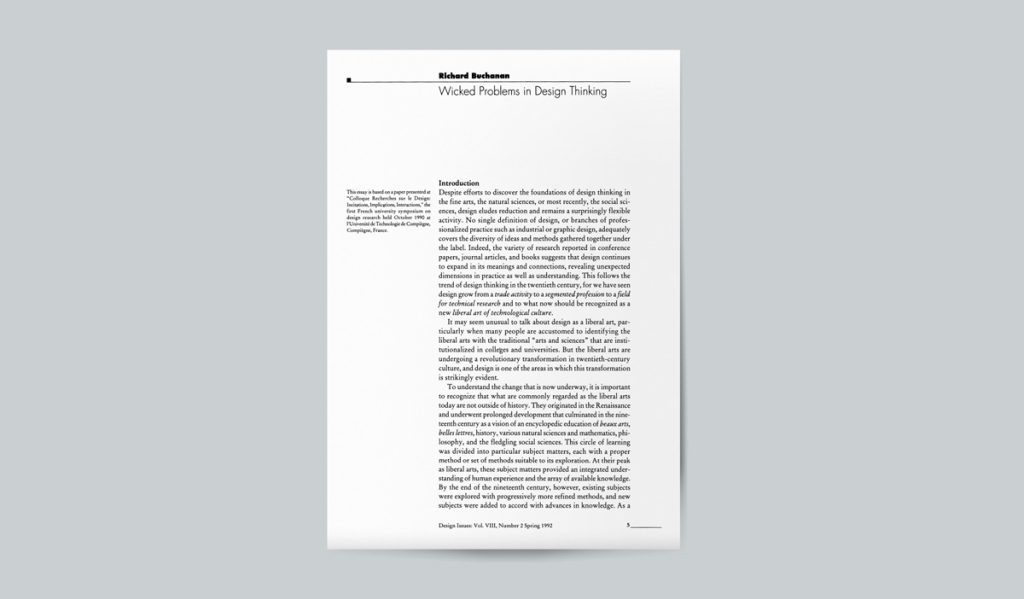
The expandable nature of the “placement” presents a critical element of wicked problems and how we can see them as a universal concept whose boundaries can change based on the situation. This manifestation of the definition of the problem elements presented the cornerstone for Kees Dorst’s problem/solution frame discussed in the earlier book Frame Innovation (What is the 8D Problem-Solving? ).
His ideas of wicked problems link with Simon’s concept about the design thinking process and how it can be seen as a non-linear process where different design ideas interact in the design arena. Also, In this placement, Buchanan differentiated between four elements of the design thinking process:
- Signs: material objects
- Things: actions
- Thoughts: complex systems or environments, which is a weird characterisation.
As he links the above elements and the two terms described earlier (category vs placement), he describes the nature of wicked problems:
“However, when a designer’s conceptual placements become categories of thinking, the result can be mannered imitations of an earlier invention that are no longer relevant to discovering specific possibilities in a new situation. Ideas are then forced onto a situation rather than discovered in the particularities and novel possibilities of that situation.”
The above manifestation describes how wicked problems are constructed and change over time, paving the way for a new perspective on problems and their analysis to identify new solutions (check also How to Use TRIZ in the Problem-Solving Process).
The Dilemmas in a General Theory of Planning by Rittel and Webber
The Dilemmas in a General Theory of Planning by Rittel and Webber, despite its age, remains a seminal work that has significantly influenced the understanding of wicked problems. Published in 1969, this paper laid the groundwork for Kees Dorst’s Frame Innovation and Buchanan’s Wicked Problems, both of which we’ve discussed. While the paper’s focus is on planning and policy science, its insights can be applied to problem definition and the process of solving them.
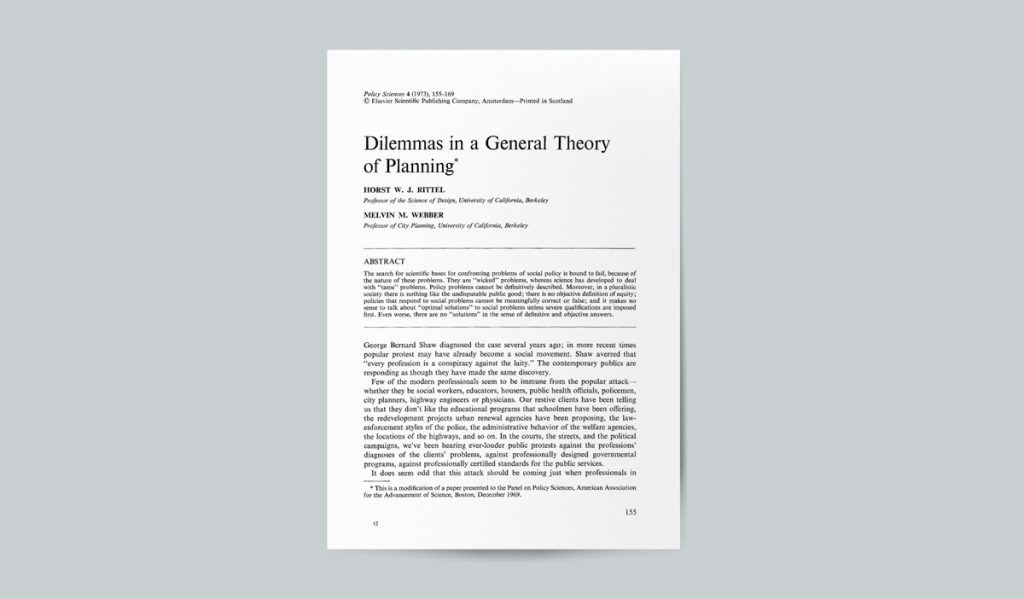
Rittel and Webber distinguished between two types of problems: tame and wicked problems. Tame problems are well-defined and clearly stated, and there is a clear direction to finding the solution, such as scientific and business problems (check how this concept influenced TRIZ problem-solving). In contrast, wicked problems are ill-defined, and we can’t define the problem until we reach a solution. However, a wicked problem is never solved, yet it moves from one state to an improved, desirable one.
The other nature of wicked problems is that we cannot reach a definitive formulation for them. To describe them, we need to develop an exhaustive inventory of conceivable solutions when asking questions about the problem. So, problem understanding and resolution are linked and change as we build an understanding of the problem at a particular moment in time.
The New Process, New Vocabulary: Axiofact = A_tefact + Memoranda by Gilbert Cockton
As you can see, the above books and papers give us a novel look at design problems and how we perceive them. My question is, why do we see problems the way we used to? A big part of the answer lies in our language, which presents mental models that stand as barriers to seeing the core nature of problems, especially the wicked ones. Therefore, we needed new vocabulary that helped us to escape these constraints. The New Process, New Vocabulary: Axiofact = A_tefact + Memoranda, by my PhD supervisor, Professor Gilbert Cockton, presents a cornerstone of new vocabularies that can help us see design thinking and how to solve problems.
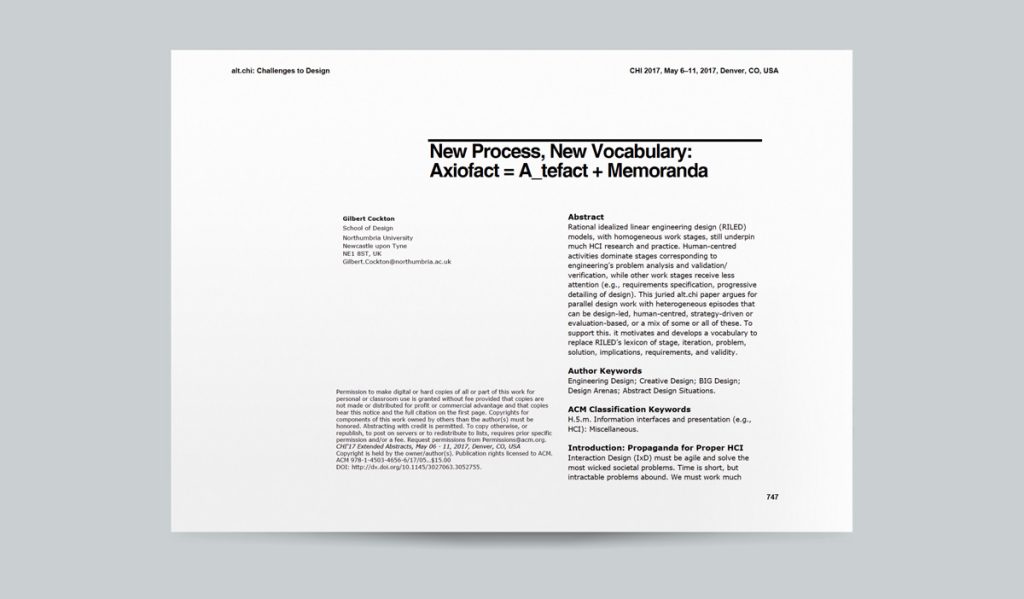
The paper eliminated the so-called design thinking process, as the term employs a linear nature; while design thinking is far from linear, it is intersected activities. Cockton described the design practice as design arenas; these arenas are distinguishing “artefacts” and “memoranda.” The “artefact” represents the design outcome, and the “memoranda” is the thing to be borne in mind. This new terminology replaces the problem and solution spaces. However, the Latin root of an artefact means the product of change or doing some art. However, this term is limited as wicked problems are not understood until we solve them, which means artefacts. So, the outcome of the design arena may remain the same as the original state, or the change is against the target user, such as preventive design and design against crime. So, Cockton replaced the word artefact with A_tefact. The memoranda consist of three arenas:
- Beneficiaries: The purpose of design
- Purposes: The Artefact and Evaluation
- Evaluations: Modifications to the Artefact
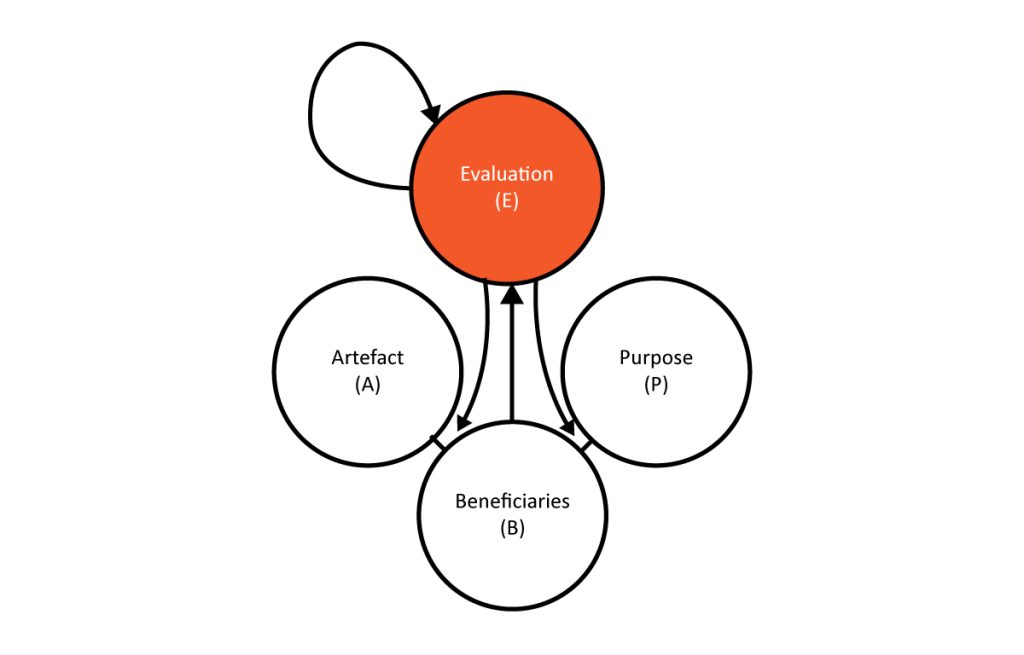
Other terms were also introduced in the paper, such as episodes to replace stages (or phases) that are inherited from linear process age. The multiple foci (sequence by concurrency) replaced the centre of the process term to indicate the complex nature of the iteration with no simple way to describe it. The term “iteration” is replaced with balanced concurrent drama, and validation is replaced with the term “axiofact,” or the value generated. The new terminology presented in Cockton’s paper allows us to escape the old mental model when addressing wicked problems. If you check the MPPF method in Design Thinking, which we discussed previously, you will find it a useful tool as it can help us address wicked problems.
Each of the above books and papers focuses on specific aspects of design and how we observe the design thinking practice driven by feedback from both academia and industry. The different design thinking models are based on appreciating these characteristics of design and encouraging it inside the organization. By applying the steps alone, you will never reach any improved status. You need to recognize these characteristics of design and try to practice them during the design process. Again, the above books came to my mind as key books in design. I am sure there are other titles. So, please share it in the comments below.
References
Brown, T. and Katz, B., 2011. Change by design. Journal of Product Innovation Management, 28(3), pp.381-383.
Buchanan, R., 1992. Wicked problems in design thinking. Design issues, 8(2), pp.5-21.
Cockton, G., 2017, May. New process, new vocabulary: Axiofact= a_tefact+ memoranda. In Proceedings of the 2017 CHI Conference Extended Abstracts on Human Factors in Computing Systems (pp. 747-757).
Cross, N., 2023. Design thinking: Understanding how designers think and work. Bloomsbury Publishing.
Dorst, K., 2015. Frame innovation: Create new thinking by design. MIT press.
Norman Donald, A., 2013. The design of everyday things. MIT Press.
Lawson, B., 2006. How designers think. Routledge.
Rittel, H.W. and Webber, M.M., 1973. Dilemmas in a general theory of planning. Policy sciences, 4(2), pp.155-169.
Simon, H.A., 1988. The science of design: Creating the artificial. Design Issues, pp.67-82.

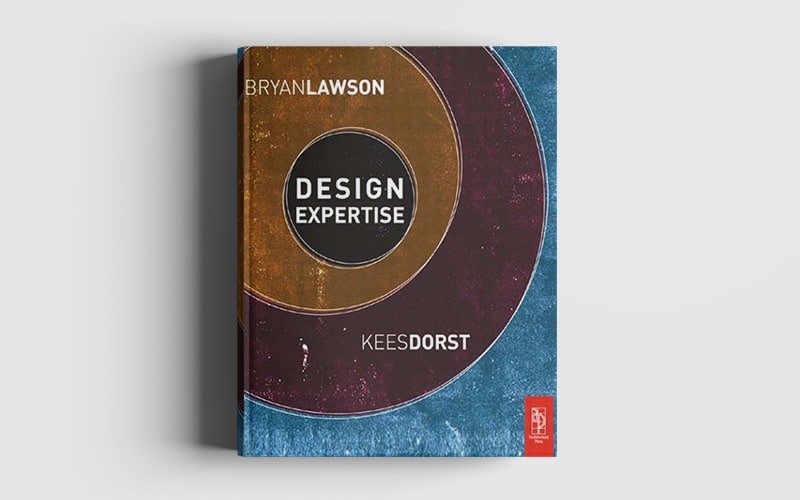
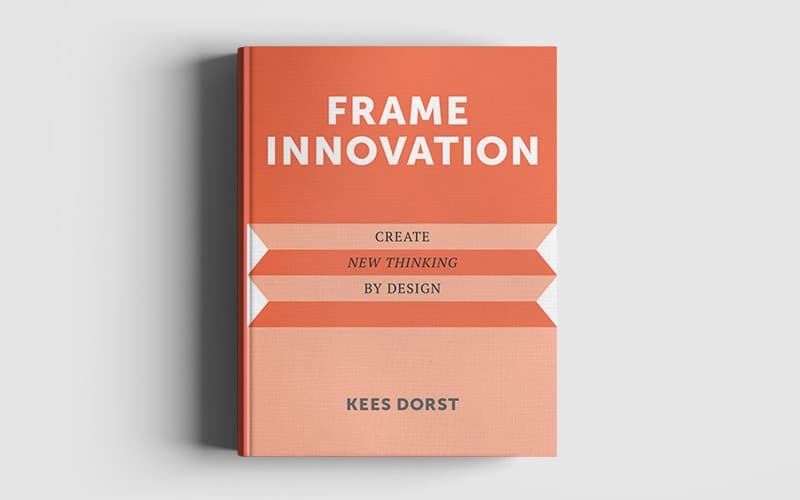

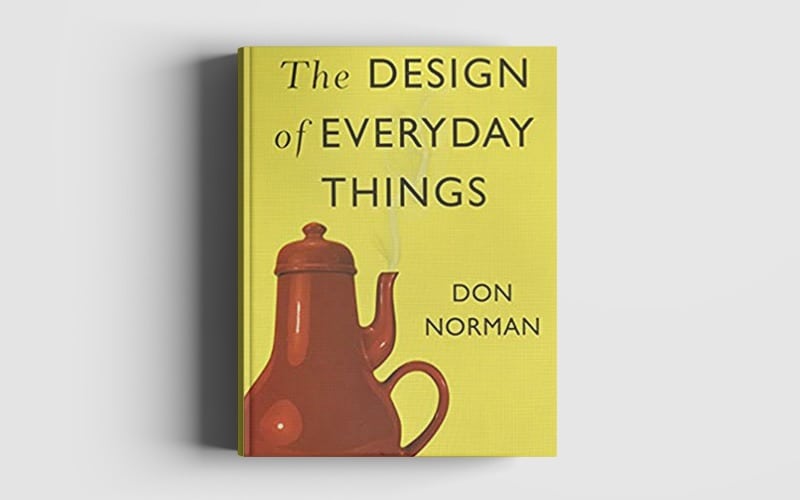

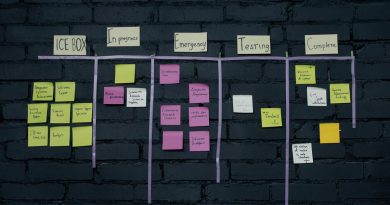




What a great set of resources. Thank you Dr Elmansy
Thanks Mo! Glad you enjoyed it.